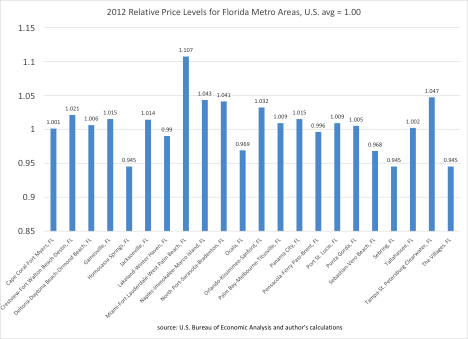Economic study by Rick Harper on financial hardship report
By Rick Harper, Ph.D. rharper@uwf.edu
By Rick Harper, Ph.D.
rharper@uwf.edu
The United Way organization has published a new study looking at household incomes and housing affordability for each of the 67 counties in Florida.

Entitled ALICE (short for Asset Limited, Income Constrained, Employed), and produced by scholars at Rutgers University, the study presents information on financial hardship. At 220 pages, it is a substantial collection of information. It presents the ALICE measure as an alternative to the usual “poverty rate” which is widely acknowledged to be an imperfect measure of household financial stress in particular local area.
Much of the data on household incomes is collected and presented by the American Community Survey team at the U.S. Census Bureau. Like data from sister agencies Bureau of Economic Analysis and Bureau of Labor Statistics, the ACS data are widely accepted as scientific and credible.
While researchers never get access to the full set of individual records collected in any geographic area due to privacy concerns, Census makes a Public Use Microdata Sample database available that lets researchers drill down to the county level and beyond. These data were the basis for much of the Rutgers study of Florida counties.
Thomas Granger, head of United Way for Florida, offers the following comment: “As I travel the state, I meet more and more families who – like we were – are motivated and working hard, yet still struggle to provide the basic necessities with little chance of saving for tomorrow … Can we help these individuals regain their footing before they slip over the edge into poverty?”
The federal poverty level was derived and presented in 1962 by a researcher as a simple 3x multiple of “thrifty food plan” necessary to sustain life. While that might have been appropriate three generations ago, today’s reality is that food prices occupy a smaller share of family budgets than before, and that housing and transportation costs have risen in importance. The ALICE study’s survival budget incorporates housing, food, transportation, child care, health care, a 10 percent buffer, and taxes, all of which can differ by geography. Food carries only a 13-15 weight in today’s ALICE budgets.
When price level-adjusted measures such as these are used, one can readily see that the income it takes to live well in Pensacola is likely to be too little to live well in New York. Many Florida cities are close to the national average, although Miami is slightly above.
One such measure of cost of living is provided by the U.S. Bureau of Labor Statistics and is presented in the chart below. Here, the U.S. average cost of living is set to be 1.00, in order to be able to see how far above or how far below the national average a particular metro area is. As can be seen, Miami comes in at 1.107, or 10.7 percent above the national average, while several other communities come in at 94.5, or 5.5 percent below the national average.
The ALICE study presents useful information about financial status, but it does not present information related to the source of income shortfalls, nor does it present comparative information for Florida versus other areas.
The study presents Calhoun, Citrus and Union counties as earning top score for economic viability. This is due to a low cost of housing, good job opportunities and high community support. Many Floridians would question whether those are in fact top-performing counties in our state. ALICE doesn’t distinguish between outcomes due to strong performance versus outcomes due to weak performance.
A county with low-cost housing might have low costs because of abundant supply, scarce demand, or a low average level of housing quality. Collier County, which has Florida’s highest per capita personal income, scores a low 147 on the economic vitality index, while Calhoun scores 189. Escambia scores 172, while Okaloosa scores 171, and Santa Rosa scores 182. Calhoun beats them all at 189. Miami-Dade comes in at 98. It seems that for ALICE, economic vitality is really more about affordability.
Dr. Rick Harper serves as director of the Studer Institute, a Pensacola, Florida-based organization that seeks citizen-powered solutions to challenges the community faces. He also directs the University of West Florida’s Office of Economic Development and Engagement in Pensacola.



